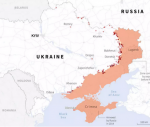You are here
Computers and the magic of uncompressed photography
By Jean-Claude Elias - Nov 16,2017 - Last updated at Nov 16,2017
Professional photographers and amateurs for whom photography is more than just candid snapshots taken with an average smartphone or camera are familiar with the uncompressed RAW photo format. For a good reason: only RAW allows extensive and almost unlimited manipulation without affecting when not destroying the photo quality. Without a computer, however, or good software to do the job, RAW is practically useless, often a burden.
Processing pictures after they have been taken has become very common. Most smartphones feature a built-in app that lets you play with the shot this way. And of course, there is software for real computers that lets you do extraordinary post-processing work, with Adobe Photoshop in the lead.
Regardless of why you should or should not post-process photos, of the debate about cheating by making you look better in the picture, about intentional deception in the media, and other ethical or non-ethical reasons, being able to correct and improve a shot is legitimate. It is justified if only for the fundamental settings that allow to you adjust brightness, exposure and contrast, white balance, to apply cooling or warming filters, and to crop the image for better, more pleasant presentation.
Typically your photos would be in the universal jpg compressed format. This is especially true if you take them with a smartphone. When you apply a change to a jpg photo you reduce its quality at the same time. Colours, tones, sharpness, resolution, clarity, and overall realism are altered, and not for better. The stronger the changes and the more the quality loss. Moreover, each time you save it, and then reopen it for more manipulation, it loses more of its original quality. The “save” operation in itself is destructive, for it has to compress the picture again.
Enter RAW. The format presents the major, the invaluable advantage of allowing you to manipulate photos time and again without affecting their original quality, this is mainly, but not only, because it preserves the original file-size and quality of the shot, and does not compress it in any way.
Cameras and software makers use different RAW types. Nikon for example uses NEF, whereas Samsung goes for DNG. Adobe Photoshop is able to read and work with all of them. These differences and this terminology do not matter, they all are native, lossless, non-compressed formats and present the same advantages.
Virtually all full-size dedicated DSLR cameras can shoot RAW, in addition to jpg of course. The shooting mode is user-selectable, for convenience. On the other hand few smartphones can perform the trick. Samsung’s top of the line Galaxy S8 is one of the few smartphones on the market that come with RAW photography ability. Is it necessarily a good thing for a handset?
It is, certainly, provided you know what this entails. Firstly it creates very large file size. If a jpg is say 4 MB, its equivalent RAW would be about 30 MB. Secondly, if you like to post-process a RAW picture taken with a smartphone, you must copy it to a computer and use an application programme like Photoshop, GIMP, or the like. Smartphones just cannot do it – but there is an exception!
Google’s Snapseed app for smartphones is made to open and process RAW pictures. As at this date it is the only professional photo editing software for smartphones. It is free and does a decent job. Still, its power cannot be compared to Photoshop’s, simply because a smartphone processing power cannot be compared to that of a full-fledged computer. Snapseed does not have a fraction of Photoshop functionality, but it does the essential settings and adjustments very well, and again, you can edit your picture a hundred times, the original quality will be preserved.
Some would argue that even if a great software app were available to edit RAW photos using a smartphone, the screen size would still be a limitation. Proper, professional photo editing is better done on a large screen. Most users go for 22”, 24” or 26” computer monitors for that. To say the least, it is just more comfortable doing it this way.
The first Chip Talk story was published in this newspaper exactly 25 years ago, in November 1992. It has since been published continuously, every week, written by the same writer. This article is the 1265th in the series.
Related Articles
If you have adopted JPG-type photos many years ago and have made it your standard way of taking, scanning, viewing, saving and exchanging photos, you may want to keep an eye on the newcomer to the image compression market.
The digital photography (DP) revolution has not only changed how we take pictures, but how we look at them and what we do with them.The DP r
What do the MP3 music and jpg photos digital formats have in common?

















